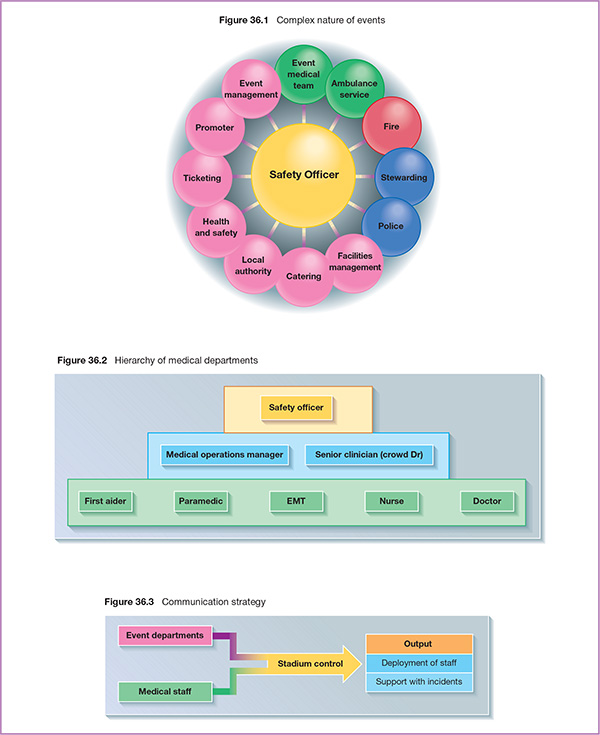36 This chapter will review the organisation and management of event medicine. The principles of pre-hospital medicine apply in event medicine but it is imperative that medical staff understand the dynamic and complex nature of medical event management. All events present varying risk. The risk assessment needs to be completed for each event to identify the problems and difficulties that medical staff may face during events. This will also consider the likelihood of significant injury and the impact this will have during the event. Through the risk assessment the levels of staffing and equipment that are required can be determined. Information from previous occasions on which the event has been held is helpful in estimating the level of risk. The risk assessment will outline areas of difficulty and risk and lead to decisions on staffing numbers. This decision needs to be made using guidance outlined by the Sports Ground Safety Authority (SGSA) if working in sporting stadia. Relevant guidance also exists for concerts and festival sites. Staffing resources need to be adequate to maintain a safe level of cover within a venue. This will normally include a range of health professionals from doctors and paramedics to first aiders. The level of staffing and resources needs to be in keeping with the business model. All events are designed to generate revenue and therefore there may be a limit on the number of doctors that would be affordable. This needs to be considered in the assessment. Justification may be sought from senior management. Varying levels of equipment are required.
Event medicine

Planning
Risk assessment
Staffing
Equipment

Full access? Get Clinical Tree








